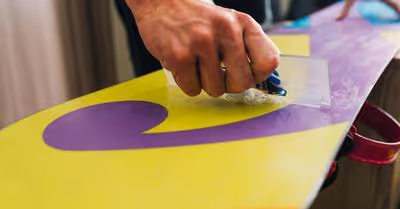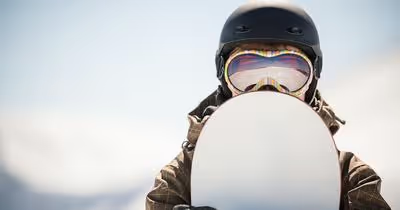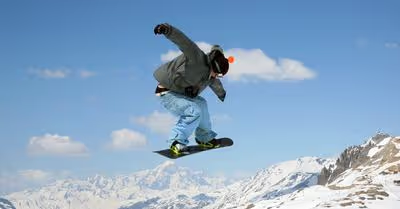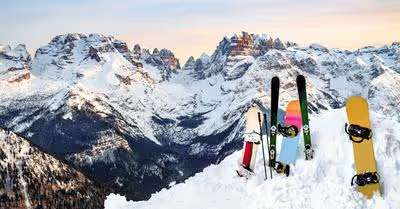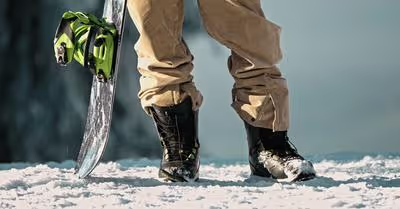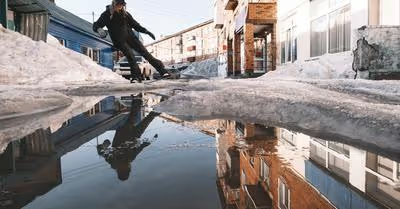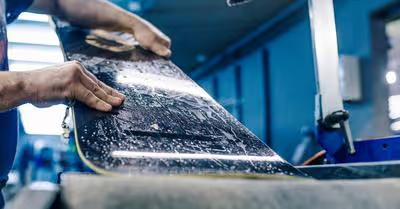Table of Contents
Snowboarding vs. Skiing
As a winter sports enthusiast, I've always been intrigued by the ongoing debate between skiing and snowboarding. Which one is more suited for beginners? Which provides a better experience on the slopes?
Skiing is often considered easier for beginners, while snowboarding provides a unique challenge. Over the years, I've found that skiing's learning curve tends to be more forgiving, allowing newcomers to find their balance quickly and hit the slopes with confidence.
On the other hand, snowboarding requires mastering a whole new set of skills, such as coordinating movements for carving turns and transitioning from one edge to another. Watch this video for more insights on the pros and cons of these sports.
Understanding Skiing

Skiing
Skiing is an exhilarating winter sport that involves sliding down snow-covered slopes with skis, ski boots, and ski poles. Starting out as a skier, you may find it easier to learn because both legs move independently, and you travel with your body facing the same direction as your feet.
As a beginner, it's always a good idea to take lessons from a ski instructor or experienced friends to learn the basics and improve your skills. Also, ski schools offer this course and other skiing programs tailored to different skill levels.
One crucial aspect of skiing is navigating ski lifts. These transportation systems carry skiers up the mountain so they can enjoy their descent. Mastering the use of ski lifts is essential to have an enjoyable experience on the slopes.
As you progress in your skiing journey, you'll notice that maintaining a stable upper body is an integral part of being a good skier. Skiers can control their speed by changing the angles of their skis with a technique called "pizza-ing," where the tips of the skis are pointed together, and the tails are spread apart.
In the great debate of skiing vs. snowboarding, there are merits to both sports. However, many people find skiing easier to pick up initially, as it allows for more natural movement and doesn't require balancing on a single ski or snowboard.
While skiing and snowboarding are different in many ways, both provide the thrill of gliding down snow-covered mountains and are worth trying. The ultimate choice narrows down to your personal preference.
Understanding Snowboarding
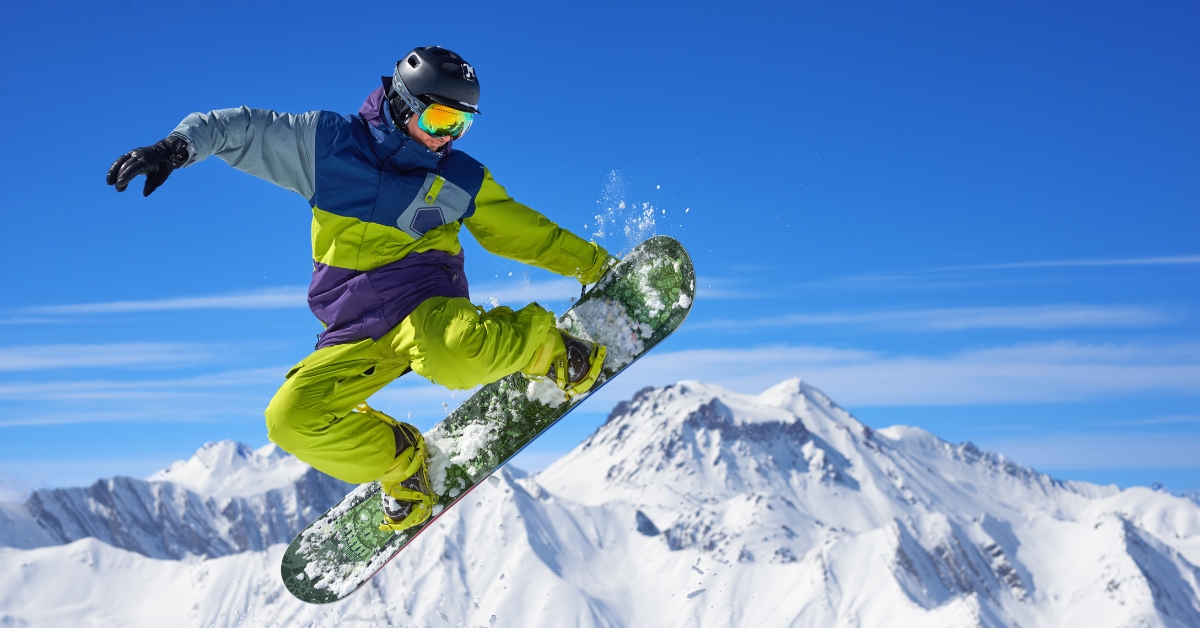
Snowboarding
My experience on the slopes, coupled with guidance from a seasoned snowboard instructor, has equipped me with deep knowledge — from selecting the perfect snowboard boot to conquering balance and tricks, leading to notable snowboarding wins.
The wonderfully diverse community of snowboarders I have met throughout the years has also deepened my appreciation for the sport.
When selecting your snowboard, it's vital to consider factors such as length, width, and shape. Boards come in different variations for specific riding styles, from all-mountain snowboards to freestyle ones. Make sure you pick the right one to suit your needs.
Snowboarding boots are an essential piece of gear, providing comfort and support for your feet and ankles. Comfort is crucial, but snugness is equally vital to prevent movement within the boot. Always opt for a smooth yet secure fit.
Comparing the Learning Curve
As an avid snowboarder, I know a common question among beginners is whether skiing or snowboarding is easier to learn. We'll explore the learning curve of each sport, particularly for beginners during their first day and first run.
The Beginner’s Experience in Skiing
Skiing is generally easier for beginners to pick up on their first day. However, the learning curve shifts after the initial stage, with intermediate skiers more likely to plateau and intermediate snowboarders advancing quickly.
In the beginner stage, the movements and coordination required are more intuitive. Each foot is on a separate ski, which allows for a somewhat natural walking or gliding motion. The use of two poles also provides additional balance and support.
However, this ease can lead to a plateau for some skiers as they reach intermediate levels and need to refine their techniques and skills.
Mastering Snowboarding Basics
Snowboarding has a steeper learning curve during the first day and first run. Beginners will need to adjust to having both feet on a single board and being sideways.
This can be challenging unless you have prior experience with either skiing or skateboarding. Yet, once snowboarders overcome this initial hurdle, they progress faster and tackle more advanced terrain.
Part of this difference is attributed to the fact that turning on a snowboard involves simpler movements, requiring more balance but less coordination compared to skiing.
The binding setup on a snowboard also enables riders to handle various snow conditions and terrain types. Check out this video for user reviews and feedback on snowboarding and skiing.
Comparing the Equipment
Now, let’s take a closer look at the key differences between the equipment used in snowboarding and skiing so you can make an informed decision when you hit the slopes at your favorite mountain resort.
While both sports involve traveling down snow-covered slopes, snowboarding requires a single board attached to both feet, while skiing uses two separate skis, with each foot having its own binding.
The following table shows the different equipment used during snowboarding and skiing:
One significant difference between the two sports is how the feet are attached to the equipment. In snowboarding, both feet are fastened to a single board, leading to a sideways stance while going down the slopes.
On the other hand, skiing allows for more freedom of movement, as the back foot is independent, and you travel facing the direction you're heading.
When riding the lifts at the resort, snowboarders usually need to unstrap one foot to maneuver in the lift line and on the chairlift. Skiers, however, remain strapped in their bindings and use ski poles for balance and navigating the lift lines.
Tackling the Physical Aspects
As a snow sports enthusiast, I've always enjoyed exploring the physical aspects of both snowboarding and skiing. We'll discuss how factors like balance, body positioning, and peripheral vision play a role in these sports.
Skiing tends to be easier to learn but harder to master. With skis, your legs and feet move independently, giving you more freedom to adjust your stance and engage your abdominal muscles. These factors make it essential to maintain a strong core and proper body positioning.
On the other hand, snowboarding requires you to travel sideways with both feet attached to the board, which can be a bit challenging for beginners. However, once you get the hang of it, you may find snowboarding more enjoyable due to the fluidity of the ride.
In skiing, the knees play a crucial role in absorbing bumps and maintaining balance, especially when tackling steeper slopes at higher speeds. This extra demand on your legs makes it essential to have adequate leg strength and flexibility.
Moreover, the forward-facing stance in skiing provides a better view of the slope ahead, allowing for quicker reaction time and a safer ride overall.
Snowboarding places a more significant emphasis on balance and lateral movements, as your feet and legs work together to control your speed and direction. Your peripheral vision becomes more critical in snowboarding since you rely on it to see what's happening on the sides of the slope.
Additionally, many snowboarders wear a back protector for extra safety, particularly when attempting tricks or navigating challenging terrain.
Ski vs. Board: Tracing the Cultural Evolution on the Slopes
As a passionate snow sports enthusiast, I've always been intrigued by the cultural differences between skiing and snowboarding on the slopes.
In the early days, snowboarding was seen as a rebellious sport, with its riders challenging the norms and breaking free from traditional skiing conventions. Surf and skate influences played a significant role in shaping the sport's image, making it wildly popular among younger generations.
On the other hand, skiing had already been an established sport with a more conservative following, possibly leading to some initial friction between the two groups.
Over time, however, these distinctions began to blur. As snowboarding gained recognition and acceptance, more ski resorts started opening their slopes to riders. By 1990, 476 ski resorts allowed snowboarding, fostering a platform for both sports to coexist and thrive.
Nowadays, it's common to see skiers and snowboarders sharing the slopes and embracing the same sense of adventure and camaraderie that brings them to the mountains. The snowboarding culture continues to celebrate creativity, self-expression, and community, values that resonate with many skiers as well.
While the cultures of skiing and snowboarding have evolved, they have ultimately become more united, demonstrating that despite their differences, both sports share a mutual love for the mountain and the thrill that it brings.
Recent Articles



